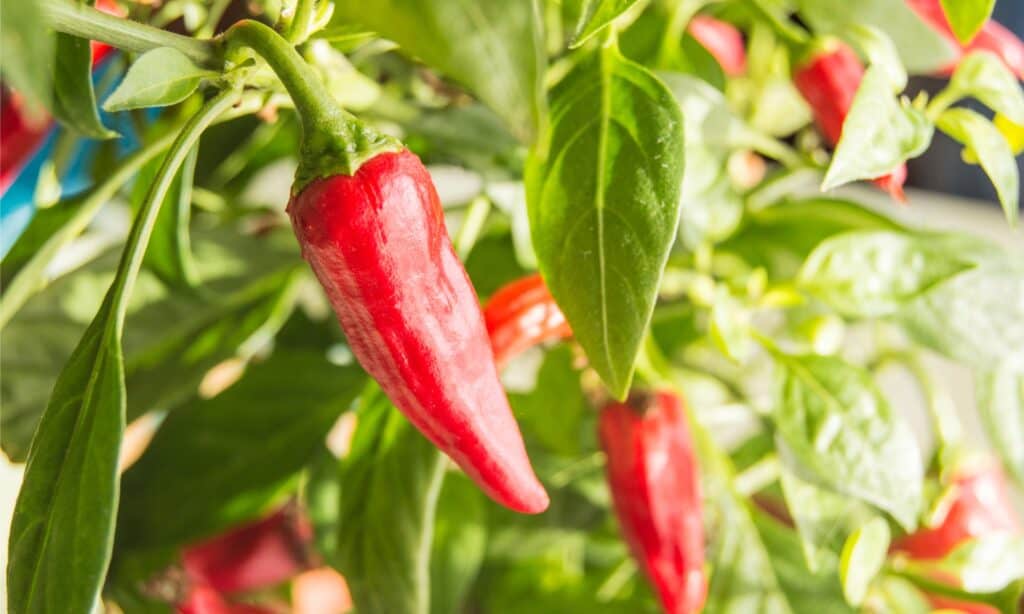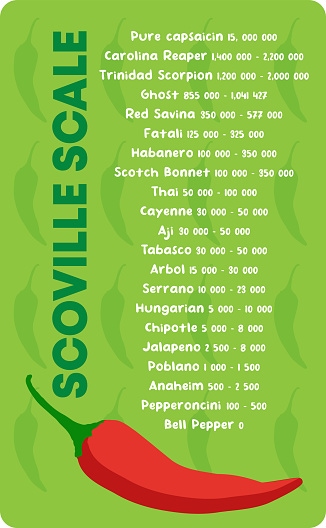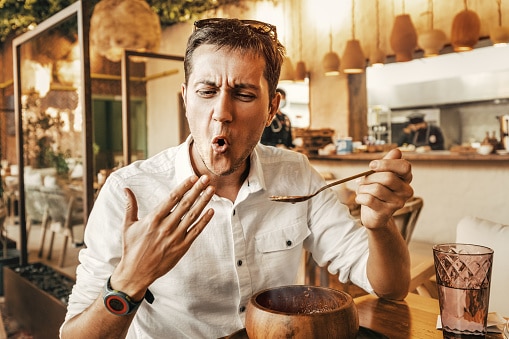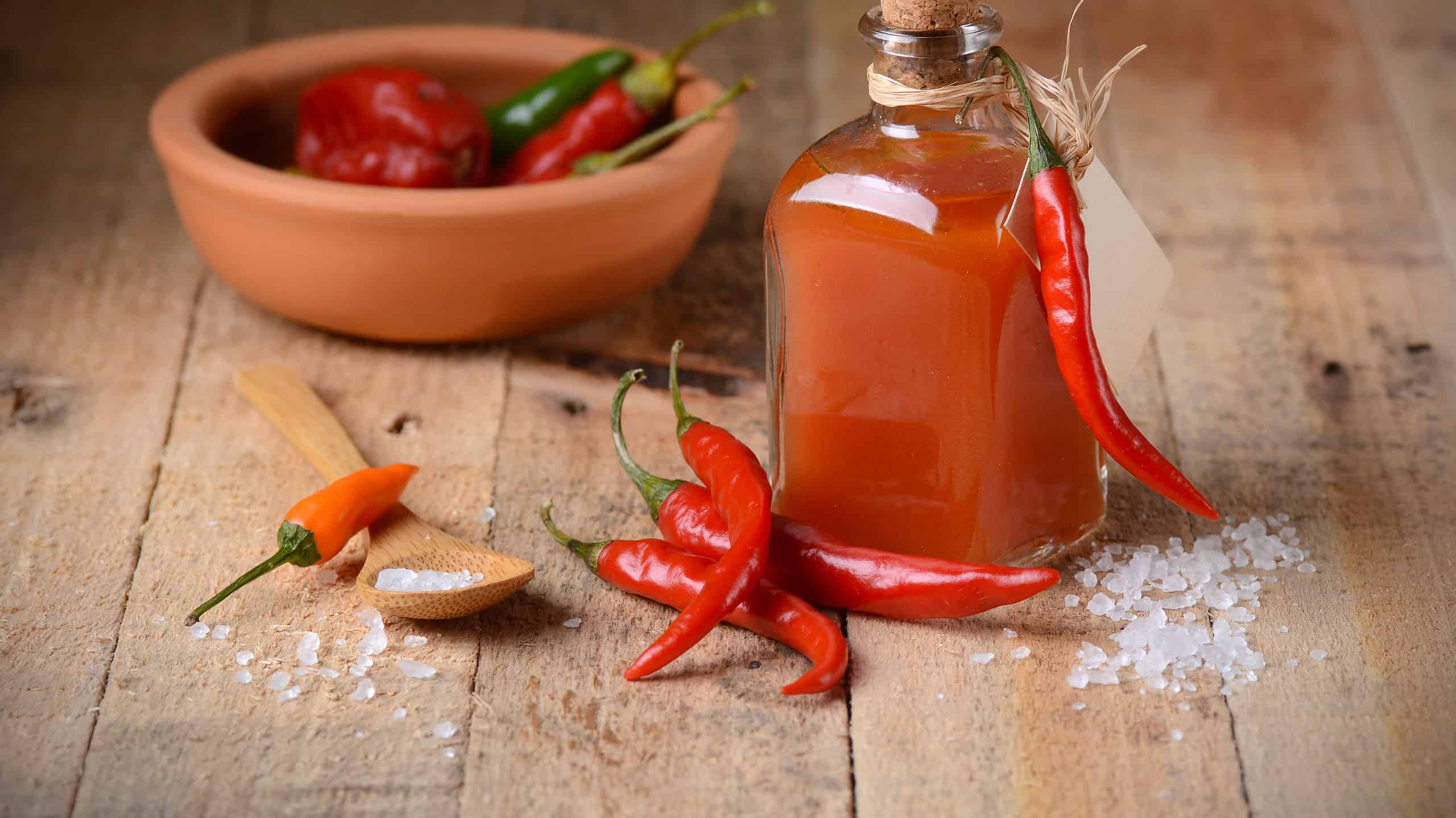Tabasco sauce is a dinner table staple for millions of people around the world. Yearly, Tabasco sells $200 million worth of hot sauce. That’s pretty profound! This hot sauce can feel hot to some and merely flavorful to others. With so many different palates and preferences, how do we know how hot Tabasco sauce truly is? By using the Scoville scale!
By measuring Tabasco sauce on the Scoville scale, we can answer objectively how hot Tabasco is. Whether or not you’re a spice fiend or a more fearful taster, this will answer the question: how hot is Tabasco sauce?
What’s the Scoville scale?

Different peppers have different Scoville units associated with them. Cayenne peppers, for example, can reach 50,000 Scoville units!
©iStock.com/ClaireLucia
The Scoville unit measures pungency. In other words, it measures the spiciness of foods. The unit of measurement is Scoville heat units (SHUs).
This scale is based on a measurement of capsaicinoids. Capsaicinoids are the types of chemicals that carry spiciness. You’ve likely heard of capsaicin, but there are many types of capsaicinoids that can impart pungency to a pepper.
Tabasco sauce’s capsaicinoid is capsaicin, which is one of the most common types of capsaicinoids that exists in peppers and hot sauce.
Wilbur Scoville was the creator of the Scoville test, which he invented in 1912. His original test of heat, called the Scoville organoleptic test, was very simple and somewhat subjective. Scoville would extract the capsaicinoids from peppers and then provide the extractions to taste testers. The taste testers would then rank the various samples from hottest to least hot.
Nowadays, a more objective method is used to determine the Scoville unit of a pepper. It’s called high-performance liquid chromatography. This is a chemical process that calculates the concentration of capsaicinoids present. This method has been used since the 1980s, due to its stronger empirical basis.
How hot is Tabasco sauce?

Tabasco sells $200 million worth of hot sauce yearly.
©Sergiy Kuzmin/Shutterstock.com
The Scoville scale has a pretty gigantic range of units. The scale starts at zero and goes up to 15 or 16 million (which is the Scoville unit of pure capsaicin). When considering the Scoville units of Tabasco sauce, it’s interesting to consider the heat of the pepper going into the sauce. Tabasco peppers exist within the range of 25,000-50,000 Scoville units. I know what you’re thinking: that’s a pretty giant range!
A lot of peppers have a large range of Scoville units associated with their type. That means one Tabasco pepper may produce a moderate burn, while another pepper could be HOT! Tabasco sauce is made from three simple ingredients: Tabasco peppers, vinegar, and salt. Because vinegar and salt aren’t hot foods, it’s clear that Tabasco sauce will be less hot than pure Tabasco peppers. This is because the capsaicin becomes less concentrated.
Standard Tabasco sauce is typically within the range of 2,500-5,000 Scoville units. Compared to the original peppers that are in the sauce, this Scoville ranking is quite a bit lower. If Tabasco sauce is too spicy for you… beware. Things get a lot hotter!
How hot are other peppers?
It can be difficult to conceptualize heat without comparing different Scoville units to one another.
Here’s a table that contextualizes Scoville units:

Here’s a list that will help you understand how different Scoville units relate to one another!
©Julie Deshaies/iStock via Getty Images
If you’re into spicy foods, it’s likely you’ve enjoyed a jalapeno, a serrano, or even a habanero pepper. Folks who aren’t into spice generally don’t understand how much hotter things get from the heat a jalapeno has. Spoiler alert: it’s a lot hotter!
So when considering the Scoville unit of Tabasco sauce, it’s around the same level of pungency as jalapenos. If you can tolerate some jalapeno spice in your food, it’s likely you can tolerate Tabasco!
Why can some people tolerate spice better than others?

Capsaicin literally makes the human brain think the mouth is on fire. No wonder some people can’t tolerate it!
©frantic00/iStock via Getty Images
A person’s spice tolerance is determined by two primary factors: genetics and receptor usage. The genetic component is simple: sometimes a person’s genes just make them more able to tolerate spicy foods. There are many cultures on earth where very hot food is a part of the everyday diet. Hot food is in their genes… literally! But take heart, it’s not just nature that’s at play in a person’s spice tolerance. If you’re a person with a low spice tolerance, practice can make perfect when it comes to spice.
Receptor usage is the second primary factor that goes into how much heat a person can tolerate. If a person is frequently exercising their spice receptors, those receptors become less sensitive, and the person can tolerate more spice!
So genetics certainly play a big part, but if you’re dedicated to the cause of becoming less sensitive to spice, start practicing. Experts suggest slowly ramping up spicy foods over time. Soon you’ll be a spice specialist!
Thank you for reading! Have some feedback for us? Contact the AZ Animals editorial team.








